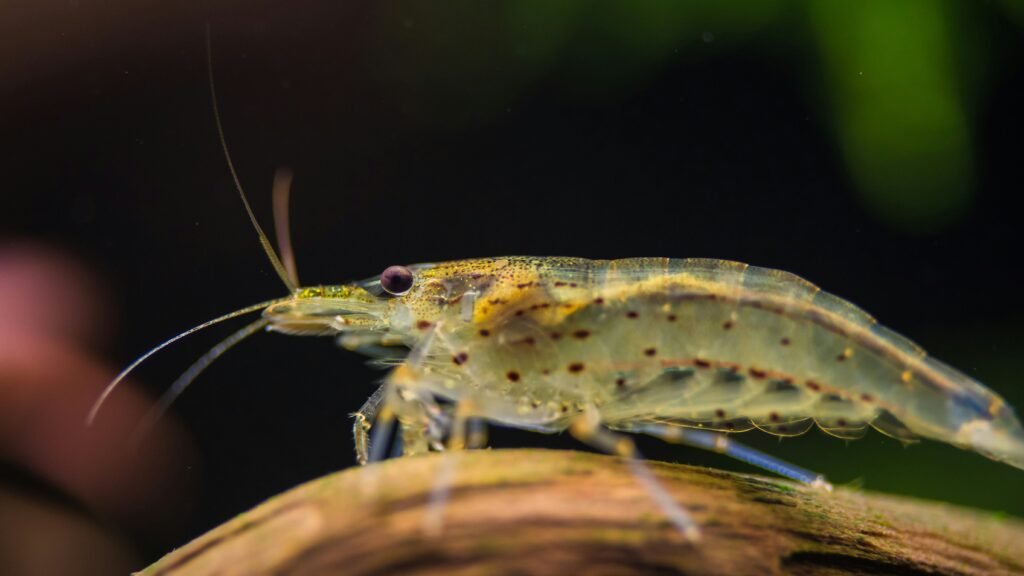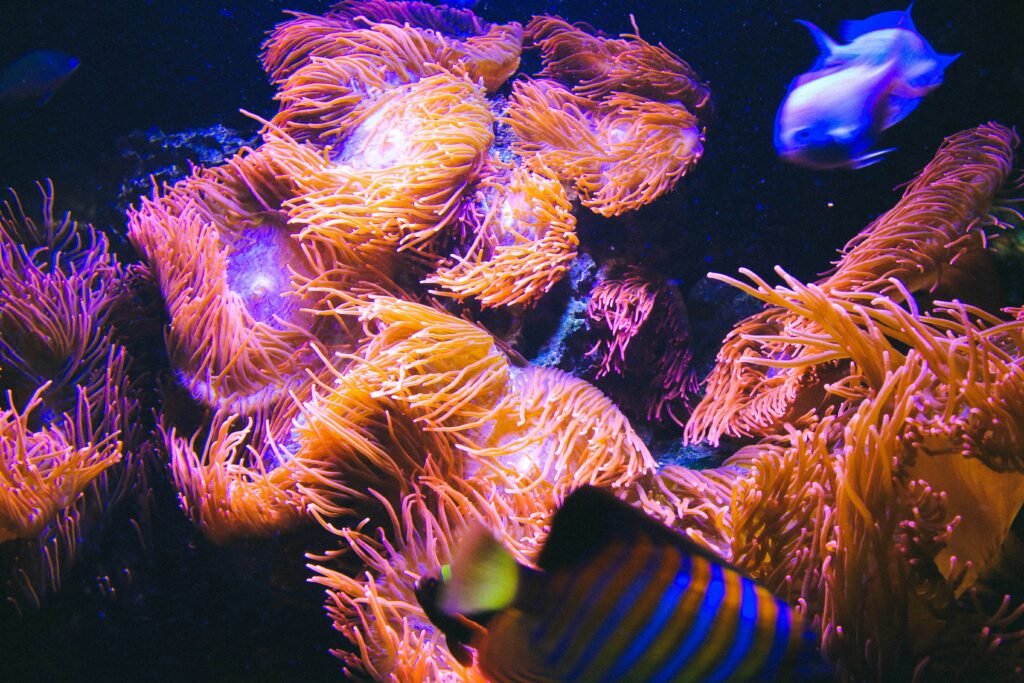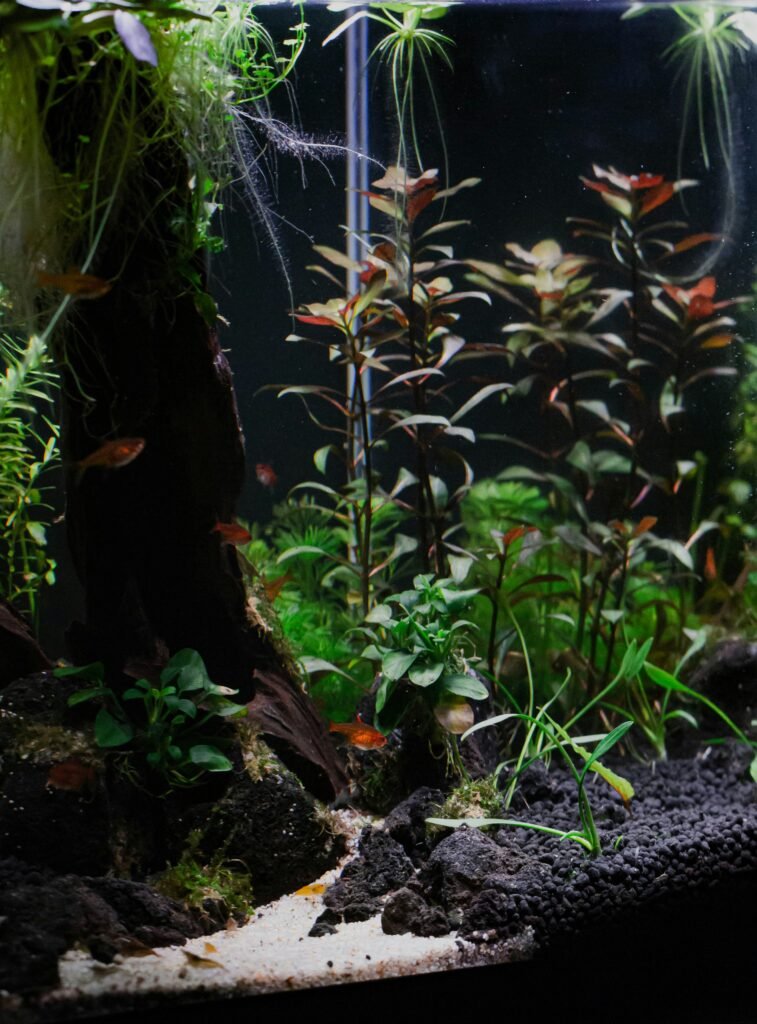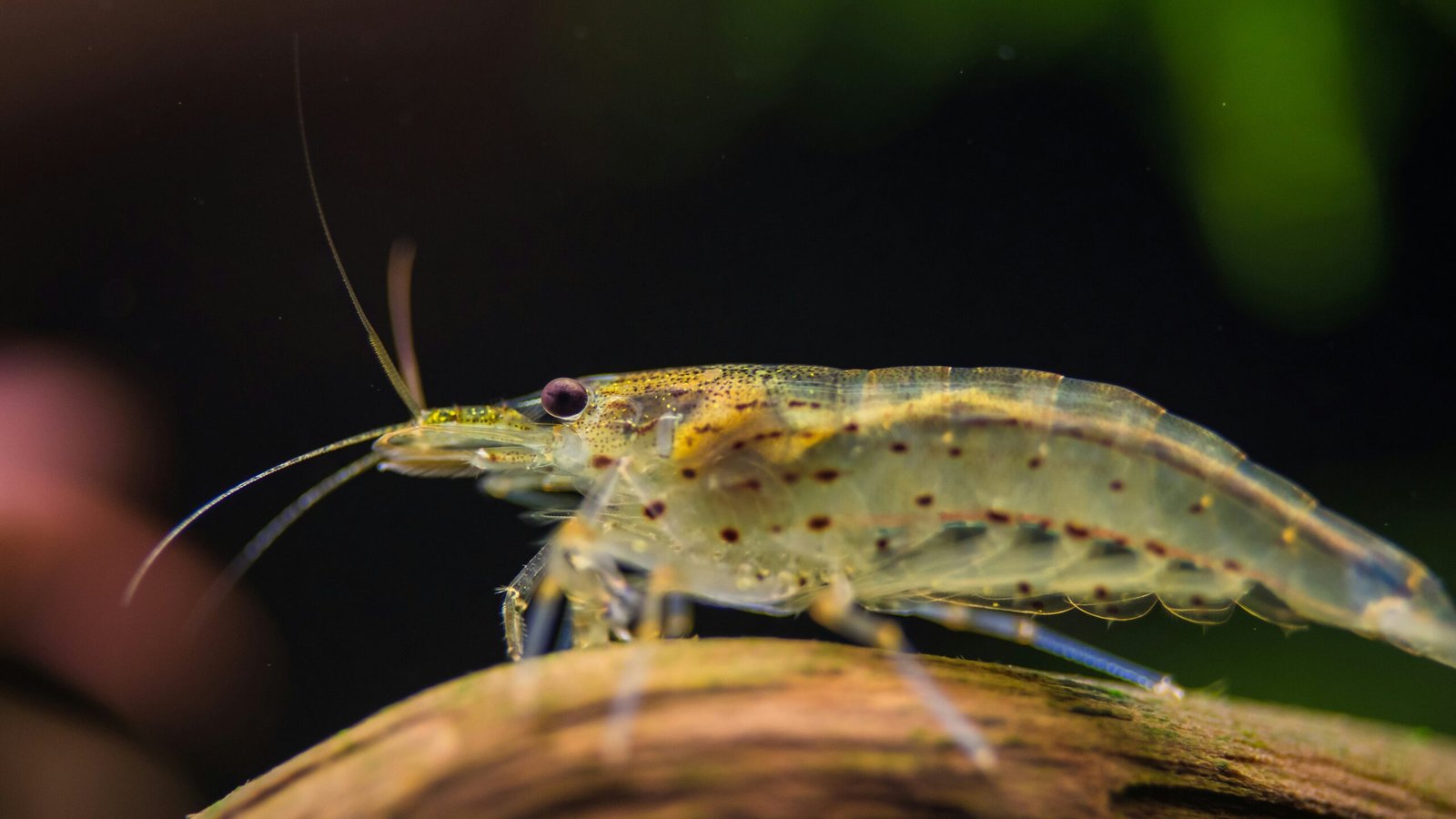Mastering shrimp aquascaping is like creating a beautiful, tiny underwater forest where your shrimp can live and play. Imagine setting up a magical world inside a fish tank, with colorful plants, shiny rocks, and cozy hiding spots for your little shrimp friends. This guide will help you understand how to make the perfect home for shrimp, explaining all the steps in a simple way. From picking the right plants to making sure the water is just right, you’ll learn how to create a special place that your shrimp will love. So, grab your tank, and let’s get started on this exciting adventure in shrimp aquascaping! Have you ever wondered how you can create a magical underwater world right in your own home? Imagine a tiny, beautiful fish tank filled with colorful plants, rocks, and—most importantly—cute little shrimp! It’s called shrimp aquascaping, and it’s a fun and rewarding hobby that you can master with a little bit of patience and care.

Overview
Shrimp aquascaping is like gardening underwater, but instead of flowers and vegetables, you’re working with aquatic plants, stones, and other decorations to create a cozy and attractive habitat for shrimp. It’s a relaxing and engaging activity that not only allows you to express your creativity but also helps you learn about the fascinating world of aquatic life.
Thesis Statement
In this guide on mastering shrimp aquascaping, you’ll learn all the essential tips and tricks you need to create a stunning underwater landscape that provides a happy and healthy home for your shrimp. From understanding the historical background of aquascaping to exploring current trends, this article will help you become an expert in no time!
Historical Context
Believe it or not, aquascaping has been around for a long time. It started in Japan with a practice called “Iwaki-gumi,” which means “stone-setting.” This technique involved arranging stones and plants in a way that mimicked natural landscapes. Over time, people began to add fish and shrimp to these underwater gardens, creating the beautiful hobby we know today.
Terminologies to Know
Before diving into the details, let’s clear up some key terms you’ll encounter in the world of shrimp aquascaping. Understanding these will make it easier to follow along:
- Substrate: The material at the bottom of the tank, usually gravel or soil.
- Filtration: The process of cleaning the water to keep it safe for your shrimp.
- Cycle: The stages of water adjustment needed to make the tank habitable.
- Aquatic Plants: Plants that grow underwater.
- Shrimps: The tiny creatures you’re going to keep in your tank, like Cherry Shrimp or Amano Shrimp.
Current Trends
Shrimp aquascaping has attracted a lot of attention in recent years. People are fascinated by the intricate and stunning underwater landscapes you can create. Social media platforms and forums are buzzing with beautiful tank setups and expert advice on how to care for your tiny, colorful shrimp.
Why Shrimp?
Shrimp are incredibly popular in aquascaping for several reasons. They are low-maintenance, come in various vibrant colors, and are great at keeping your tank clean by eating leftover food and algae.

Setting Up Your Shrimp Tank
Setting up a shrimp tank is not as complicated as it might seem. Here are the main components you’ll need:
Get the Right Equipment
You’ll need a glass tank, a filter, a light, a heater (optional depending on your shrimp species), and some substrate. Your tank size can vary, but a typical starter size is 10 to 20 gallons.
| Equipment | Purpose |
|---|---|
| Glass Tank | The main container for your aquascape. |
| Filter | Keeps the water clean and safe for your shrimp. |
| Light | Helps plants grow and showcases your aquascape. |
| Heater | Maintains consistent water temperature (optional). |
| Substrate | Provides a base for plants to root and for shrimp to explore. |
Preparing the Tank
- Clean the Tank: Rinse the tank with water. Don’t use soap or chemicals as they can harm your shrimp.
- Add the Substrate: Spread the substrate evenly at the bottom of the tank. It provides a base for your plants and makes the environment more natural for shrimp.
- Install the Filter and Heater: Place the filter and heater in the tank as per the instructions. These are essential for maintaining a healthy environment.
- Fill with Water: Fill the tank with dechlorinated water. Use a water conditioner if necessary to remove chlorine and other harmful chemicals.
Choose the Right Plants and Decorations
Aquatic Plants
Plants are crucial in shrimp aquascaping. They provide shelter for the shrimp and help maintain good water quality. Some beginner-friendly plants include Java Moss, Anubias, and Hornwort.
Decorations
You can use rocks, driftwood, and other decorations to create hiding spots and make the tank more visually appealing. Just make sure they are safe for aquarium use.
Cycling Your Tank
Before you add shrimp, you need to cycle your tank. Cycling is the process of establishing beneficial bacteria that break down waste. It takes about 4-6 weeks but is crucial for shrimp health.
- Ammonia Source: Introduce a small amount of fish food or a few hardy fish to produce ammonia.
- Monitor Levels: Check ammonia, nitrite, and nitrate levels using a test kit.
- Wait: Once ammonia and nitrite levels drop to zero and nitrates are present, your tank is cycled and safe for shrimp.
Testing Water Parameters
| Parameter | Ideal Range for Shrimp |
|---|---|
| pH | 6.5 – 7.5 |
| Ammonia | 0 ppm |
| Nitrite | 0 ppm |
| Nitrate | Less than 20 ppm |
| Temperature | 68-78°F (depending on shrimp species) |

Adding Your Shrimp
Once your tank is cycled, it’s time to introduce your shrimp. Start with a smaller number to ensure the environment is suitable.
Acclimating Shrimp
- Float the Bag: Place the shrimp bag in the tank for 15-20 minutes to match the temperatures.
- Slowly Add Tank Water: Gradually add small amounts of tank water into the bag over an hour.
- Release: Gently release the shrimp into the tank using a net.
Choosing Shrimp Species
Some popular and beginner-friendly shrimp species include:
| Shrimp Species | Colors Available | Special Notes |
|---|---|---|
| Cherry Shrimp | Red | Very hardy and easy to care for. |
| Amano Shrimp | Clear or brown | Great algae eaters. |
| Ghost Shrimp | Transparent | Very inexpensive and easy to find. |
| Blue Velvet Shrimp | Blue | Unique color makes them intriguing. |
Caring for Your Shrimp and Tank
Feeding
Shrimp are not picky eaters. You can feed them specialized shrimp food, algae wafers, or blanched vegetables like zucchini or spinach. Feed them only what they can consume in a few hours to prevent overfeeding and water contamination.
Maintenance
Regular maintenance keeps your tank healthy:
- Weekly Water Changes: Replace 10-20% of the tank water every week.
- Monitor Water Parameters: Regularly check the pH, ammonia, nitrite, and nitrate levels.
- Clean the Filter: Rinse the filter media in tank water to avoid killing beneficial bacteria.

Common Problems and Solutions
Even seasoned aquascapers face issues. Here are some common problems and solutions:
Algae Growth
Algae can be unsightly and compete with plants for nutrients. To control algae, reduce light exposure, and don’t overfeed your shrimp.
Shrimp Health Issues
If your shrimp become lethargic or discolored, check the water quality. Poor water conditions are usually the culprit. Ensure parameters are within the ideal range.
Advanced Techniques and Tips
Once you are comfortable with the basics, you can try advanced aquascaping techniques to create even more stunning setups.
CO2 Injection
Adding CO2 can help your plants grow faster and healthier but requires some technical understanding to balance correctly.
Aquascaping Styles
There are different styles to explore, such as the Dutch Style, which focuses on lush plant arrangements, or the Iwagumi Style, which emphasizes rock placements.

Example 1: A Stunning Beginner’s Tank
Let’s look at an example of a simple yet beautiful shrimp tank setup:
Materials Used
- 10-gallon tank
- Fine gravel substrate
- Java Moss and Anubias plants
- Driftwood and small stones
- Cherry Shrimp (10)
Setup
In this example, the tank was set up with Java Moss attached to driftwood, creating natural hiding spots for the shrimp. The Cherry Shrimp were introduced after cycling the tank, and regular maintenance was performed to ensure stability.
Results
The shrimp thrived, breeding successfully due to the optimal conditions. The tank remained algae-free thanks to the natural balance of plants and shrimp.
Example 2: An Advanced High-Tech Tank
For those looking for a challenge, here is a more advanced setup:
Materials Used
- 20-gallon tank
- CO2 system
- Nutrient-rich substrate
- Variety of plants including Monte Carlo and Rotala
- Hardwood pieces for structure
- Amano Shrimp (15)
Setup
This tank employed a nutrient-rich substrate and a CO2 injection system to support the growth of demanding plants. Driftwood and rocks were carefully arranged to create a natural yet aesthetically pleasing scape.
Results
The Amano Shrimp thrived in this lush environment, effectively controlling algae. The plants grew abundantly, requiring regular trimming and care.
Comparing Different Approaches
When it comes to shrimp aquascaping, there are multiple ways to achieve a beautiful and healthy tank. A minimalist approach, using fewer plant species and simpler decorations, requires less maintenance but might not offer the same visual complexity as a high-tech tank with CO2 systems and many plant species.
| Approach | Advantages | Disadvantages |
|---|---|---|
| Minimalist | Low maintenance, easy setup | Limited variety in visuals |
| High-Tech | Stunning visuals, rapid plant growth | Higher maintenance, more equipment needed |
Impact of Different Setups
Both minimalist and high-tech setups have their own impact. Minimalist setups might be easier for beginners, while high-tech setups offer more challenges and rewards for experienced aquascapers. The choice depends on your interest, budget, and time availability.
Future Directions and Implications
Predictions
Shrimp aquascaping is constantly evolving. With advances in technology, like better LED lights and improved CO2 systems, we can expect even more beautiful and intricate tank setups. More people will likely become interested in this hobby as it becomes more accessible and popular.
Implications for the Hobby and Society
Shrimp aquascaping doesn’t just benefit hobbyists; it has broader implications. It can provide educational opportunities about aquatic ecosystems, teach responsibility through regular maintenance, and offer a peaceful and rewarding hobby that promotes mental well-being.
Conclusion
Recap
We’ve covered everything from the basics of shrimp aquascaping to advanced techniques. You now know how to set up a tank, choose the right shrimp and plants, and maintain a healthy environment.
Final Thought
Think about the magical micro-world you can create right in your room. Each step, from setting up the tank to watching your shrimp thrive, is an adventure filled with wonder and learning.
Engagement
Got questions? Leave a comment below! Share your own shrimp aquascaping experiences, or explore more resources on aquascaping online. Let’s keep this amazing community growing!
Credible Sources
• “The 101 Best Aquarium Plants” by Mary Bailey and George Farmer
• “The Shrimp Aquarium: A Complete Pet Owner’s Guide” by Michael Oliver
• The Aquascaper Forum (www.theaquascaper.com)
• Aquarium Co-op YouTube Channel
Happy aquascaping!



